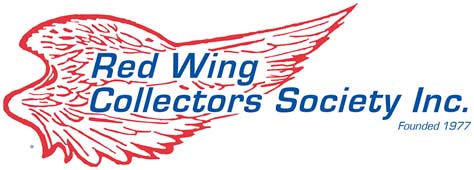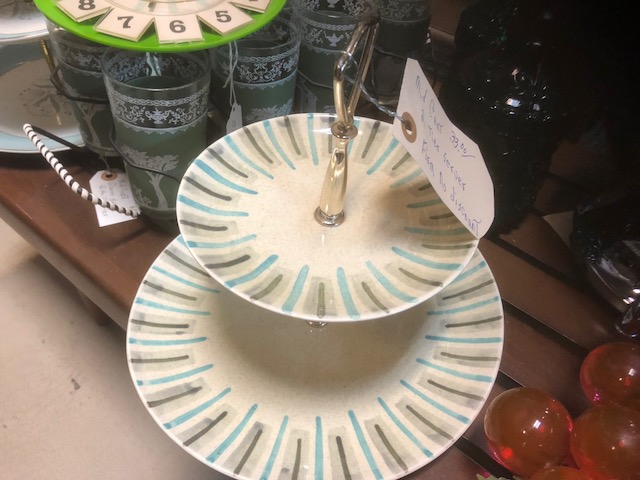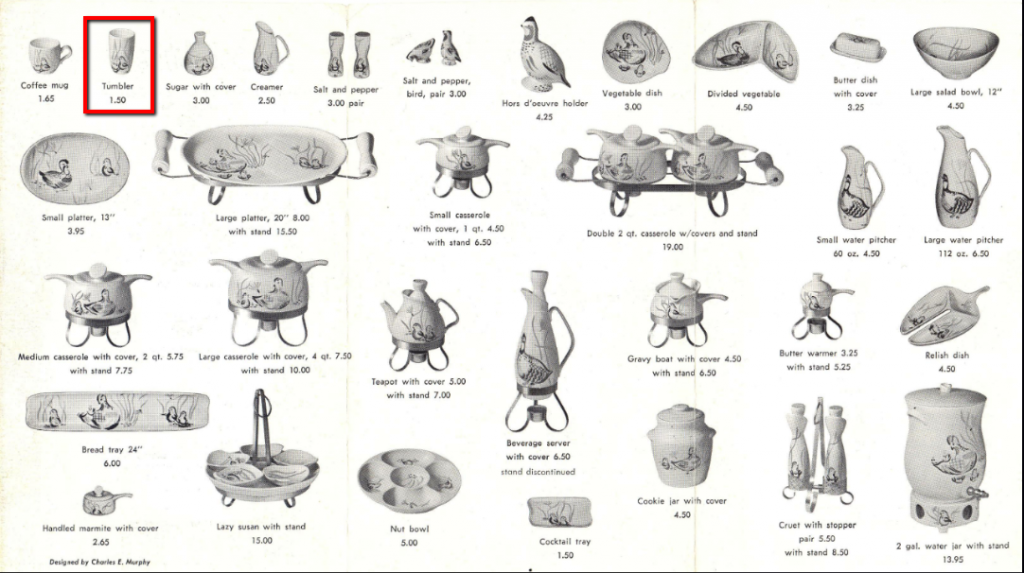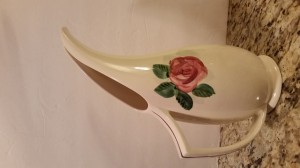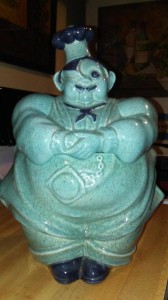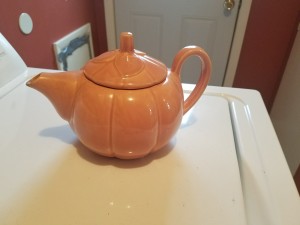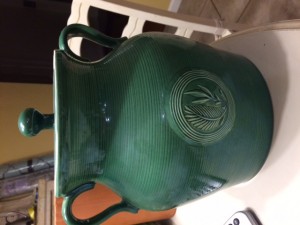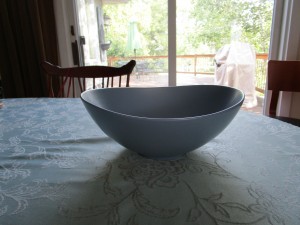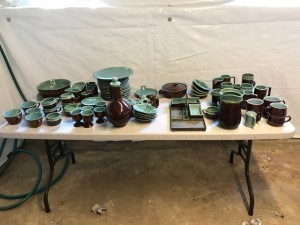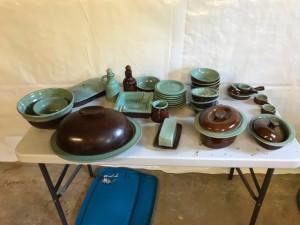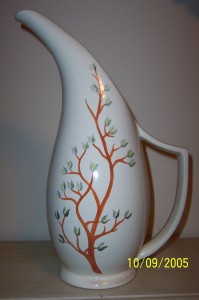Good Morning,
Alan
Answer: This two tiered tidbit tray was made from two test or sample plates. The three handwritten codes on the bottom of the plate confirm this.
The plates are in the Futura shape. The design resembles Pepe, a pattern from the DuoTone line, but the colors are different. Perhaps consideration was given to add Pepe to the Futura line, but most likely the glazes were the focus of the test. After testing was finished and the sample plates were no longer needed, they were drilled and made into a tidbit tray that was probably sold at the Red Wing Pottery Salesroom. The Salesroom served as a place for Red Wing to sell seconds, overruns and various odds and ends like this tidbit tray.
It’s hard to place a value on a unique piece like this. Collectors will appreciate a well-known pattern (Pepe) in a different color on plates from the “wrong” dinnerware line. But the holes that were drilled to convert the plates into a tidbit tray detract from the value considerably. If the dinner plate was intact I would estimate its value to be in the $400-600 range, maybe even higher to the right collector. But as a tidbit tray I’d estimate the value to be no more than half as much.
Larry R
